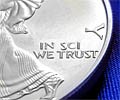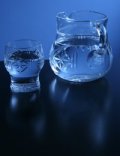 How can science benefit from online social media?
How can science benefit from online social media?
My good friend, Jean-Claude Bradley of Drexel University, a chemist and host of the UsefulChem Blogspot blog, who is very keen on the use of information technology and the notion of the open notebook was first to respond to my question when I asked a variety of contacts for their opinions: “For me the answer is clear: it is a great way to find new collaborators whom I would otherwise not have met.” I’d have to agree, I’ve known JCB for quite some time now, although we’ve never even shaken hands. He was one of the early interviewees for my Reactive Profiles column. We didn’t meet virtually through online media, however, but through a mutual friend Tony Williams, then of ACD/Labs and now increasingly well known as ChemSpiderman.
Erik Mols, a Lecturer in Bioinformatics at Leiden University of Applied Science, The Netherlands, echoed JCB’s remark: “It gives me the opportunity to discuss with people I never would have met,” he said, and added that, “It creates possibilities for my students to do their internship abroad.”
Another good friend, Egon Willighagen, who is a post-doc at Wageningen University & Research Center, provided a quite detailed answer: “It provides one with the means to mine the overwhelming amount of information,” he says, “For example, searching for some scientific piece of software is more targeted when I search amongst bookmarks of fellow bio/chemoinformaticians than if I were to search Google.” He points out that the Web 2.0 services are most useful when one’s online friends have labelled or tagged particular tools, or better still commented or rated them, as can be done with http://del.icio.us/, for instance. This concept holds just as true for publications, courses, molecules, and other content.
Willighagen points out that conventional search engines do fill an important gap (WoS, Google, etc), “But, they lack the ability in itself to link this with expert knowledge,” he says, “This is particularly why Google, I think, is offering all sorts of services: to find a user profile from a mining point of view. FOAF, social bookmarking, etc, makes such profiles more explicit, allowing more targeted search results.”
Personal contact Joerg Kurt Wegner, a scientist at Tibotec (Johnson & Johnson), suggested that my original question might be couched in slightly different terms: “The question is rather why ‘social science’ is different to ‘editorial science’?”
He suggests that one of the best visualizations for this difference is Alexa’s web ranking statistic comparing Wikipedia and Encyclopaedia Britannica. Wikipedia is a social information gathering process and Britannica is an editorial process. The graph shows that Wikipedia increased its access and popularity dramatically compared to Britannica. “Based on this, I would conclude that the benefit (not only the plain access) is higher for the social service,” Wegner says. He then emphasises that there is indeed a shared problem among scientists, that of information overload.
“Honestly, I cannot see how any editorial process can cope with this problem,” says Wegner. Social software in contrast might be able to tackle this challenge. “Social software is driven by small dedicated user groups (oligarchies),” he explains, “So, compared to an editorial process the number of ‘real’ contributors might actually not be higher. However, the enrichment of diverse and really interested people might be better. If you think that you need for science the smartest set of diverse people, then ‘social software’ cannot be a bad choice, right?”
Wegner suggests that anyone who does not believe this to be the case should carry out a search for their collaborative partners using conventional information sources. The likely result once again will be information overload. More information but no increase in our reading capacity. “Information overload solutions and social software looks like a matching relationship to me,” he adds. The final obstacle is for social software, web 2.0, online networking, social media, whatever you want to call it, to be accepted by the majority and to mature. “Has social software reached a mature status in Gartner’s hype cycle,” asks Wegner, “that means that even conservative people will realize that it is highly recommended to adopt this technology. The question here is also not if science benefits from social media, but how steep the benefit curve is. The longer you wait, the flatter the benefit curve.”
Deepak Singh of the business|bytes|genes|molecules blog adds that, “Historically communication among scientists was limited, e.g. you could get together with your peers from around the world at a conference, or through newsgroups. That’s where collaborations were born, but the scale was limited out of necessity.” Things have changed significantly. “Today, with resources like open wet-ware, etc, and more avenues for online conversation, including blogs and wikis collaborations become a lot easier and feasible.”
In addition, Singh suggests that science is no longer restricted to peer-reviewed publications as the only means of formal communication within the scientific community. “You could publish a paper and blog about the back story, or like some others, e.g. Jean-Claude Bradley, you could practice Open Notebook Science.” He points out that the likes of videos and podcasts only add to the options now available for communicating science.
 However, there is another thread to the idea of social media benefiting science and that is that it could also benefit the public with respect to science. “For some reason,” says Singh, “science ended up becoming this silo and preserve of the experts and we ended up with a chasm between experts and others.” Social media could close this gap and make it easier to create virtual communities of people who have common interests, like to share their knowledge, are just curious about things, or are lobbyists and others. “One area where I see tremendous opportunity is education,” Singh adds, “whether through screencasting, or podcasts, or just video lectures and wiki-based learning, that’s probably the one area where I am most hopeful.”
However, there is another thread to the idea of social media benefiting science and that is that it could also benefit the public with respect to science. “For some reason,” says Singh, “science ended up becoming this silo and preserve of the experts and we ended up with a chasm between experts and others.” Social media could close this gap and make it easier to create virtual communities of people who have common interests, like to share their knowledge, are just curious about things, or are lobbyists and others. “One area where I see tremendous opportunity is education,” Singh adds, “whether through screencasting, or podcasts, or just video lectures and wiki-based learning, that’s probably the one area where I am most hopeful.”
Find David Bradley on Nature Network here and on Nanopaprika nano science network here.

 I’m playing catch up, after some offline time last week (holidays, families, and illness), so today’s post is a grab-bag of the various items (mainly books) sitting in a large pile on my desk that I thought deserved a quick mention and a link or two for more information.
I’m playing catch up, after some offline time last week (holidays, families, and illness), so today’s post is a grab-bag of the various items (mainly books) sitting in a large pile on my desk that I thought deserved a quick mention and a link or two for more information.

 The first response to my question was from user J Pegues, a self-described CEO-level consultant in the US. Pegues, who in one sense ignited the flames, but also emphasised that people do not distrust science, instead they distrust the US government:
The first response to my question was from user J Pegues, a self-described CEO-level consultant in the US. Pegues, who in one sense ignited the flames, but also emphasised that people do not distrust science, instead they distrust the US government: